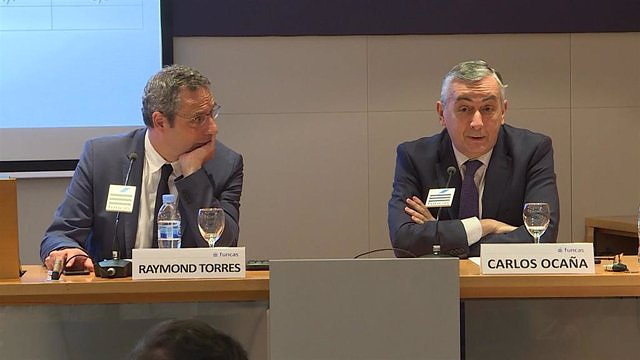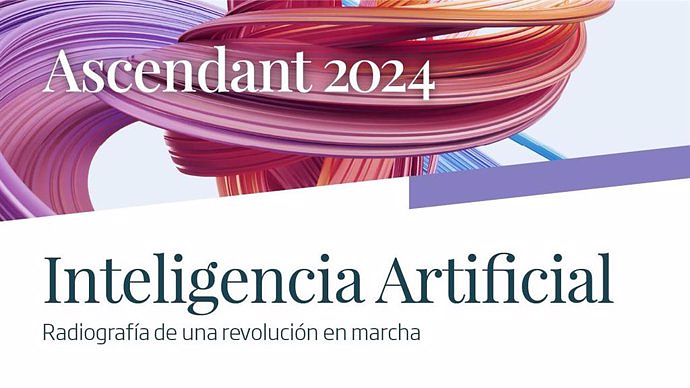Private consumption will recover at the end of this year and reach pre-pandemic levels
MADRID, 22 Oct. (EUROPA PRESS) -
The Savings Bank Foundation (Funcas) foresees a moderation in the household savings rate and estimates that it will return "exactly" to the historical average of 6.7% as a proportion of disposable income next year.
From the Foundation, a rebound was detected during the first part of the year in the savings rate mainly because households have considered it necessary to repay loans early to, in some way, cushion the impact of the rise in the Euribor on their financial costs. However, the director of Economics and Statistics at Funcas, Raymond Torres, believes that this trend "is not going to continue."
Funcas' projections indicate that the household savings rate, measured according to disposable income, will return exactly to the historical average of 6.7% next year, compared to the 8.2% expected for 2023 or the 7th, 6% registered in 2022.
Thus, it would be exactly at the same average rate recorded between 2014 and 2019 (6.7%), which is below that recorded during the years of the financial crisis - between 2008 and 2013 - when it reached 8.8. %.
From Funcas, they have detected an acceleration in the growth of household disposable income in nominal terms, which grew by 12.2% year-on-year in the second quarter - after 11% in the first -, the rates being higher of the historical series.
These figures are due, according to Funcas, to the growth in salaries and social benefits - mainly pensions - which more than compensate for the increase in interest payments.
All of this leads to the savings rate currently continuing at very high levels, reaching the highest figure for a second quarter in the entire series in the second quarter - excluding 2009 and the years of the pandemic, 2020 and 2021, characterized due to the phenomenon of 'oversaving'--.
The increase in savings has served to repay loans, Funcas has assured. At the same time, private sector debt continues to reduce, as it has been doing uninterruptedly after the effects of the pandemic ended in the first quarter of 2021.
In fact, in the second quarter, the consolidated debt for non-financial corporations stood at 66.6% and that of households and private non-profit institutions serving households (NPISH) at 49.9%. , the figures being the lowest in the last twenty years.
Regarding household consumption, the Foundation predicts that it will recover at the end of this year, in the last quarter of 2023, and would be at the pre-pandemic level.
Despite this, Funcas has warned that in 2024 there will be less momentum for the normalization of tourism and agreements to recover the purchasing power of salaries, with its corollary in terms of household disposable income and private consumption. Thus, it is expected that the private consumption deflator will register a slight deceleration, from 3.9% this year to 3.6% in 2024

 Exploring Cardano: Inner Workings and Advantages of this Cryptocurrency
Exploring Cardano: Inner Workings and Advantages of this Cryptocurrency Seville.- Economy.- Innova.- STSA inaugurates its new painting and sealing hangar in San Pablo, for 18 million
Seville.- Economy.- Innova.- STSA inaugurates its new painting and sealing hangar in San Pablo, for 18 million Innova.- More than 300 volunteers join the Andalucía Compromiso Digital network in one month to facilitate access to ICT
Innova.- More than 300 volunteers join the Andalucía Compromiso Digital network in one month to facilitate access to ICT Innova.-AMP.- Ayesa acquires 51% of Sadiel, which will create new technological engineering products and expand markets
Innova.-AMP.- Ayesa acquires 51% of Sadiel, which will create new technological engineering products and expand markets Unicaja lifts its first FIBA Champions League at the expense of Lenovo Tenerife
Unicaja lifts its first FIBA Champions League at the expense of Lenovo Tenerife Abascal (Vox) criticizes that Sánchez is "victimizing" himself and calls for elections after his possible resignation
Abascal (Vox) criticizes that Sánchez is "victimizing" himself and calls for elections after his possible resignation Carlos Alcaraz reaches the round of 16 in Madrid without breaking a sweat
Carlos Alcaraz reaches the round of 16 in Madrid without breaking a sweat Some 5,000 people demonstrate in front of Congress for democracy, hours before Sánchez's decision
Some 5,000 people demonstrate in front of Congress for democracy, hours before Sánchez's decision How Blockchain in being used to shape the future
How Blockchain in being used to shape the future Not just BTC and ETH: Here Are Some More Interesting Coins Worth Focusing on
Not just BTC and ETH: Here Are Some More Interesting Coins Worth Focusing on UPV students build a prototype of a wooden house to move to Equatorial Guinea
UPV students build a prototype of a wooden house to move to Equatorial Guinea The UA opens the call for the Impulso 2024 Awards for the best innovative business initiatives
The UA opens the call for the Impulso 2024 Awards for the best innovative business initiatives ALI, virtual assistant from Alicante, internationally recognized by the OECD
ALI, virtual assistant from Alicante, internationally recognized by the OECD Retrópolis brings the golden age of video games and computing to the UPV
Retrópolis brings the golden age of video games and computing to the UPV A million people demonstrate in France against Macron's pension reform
A million people demonstrate in France against Macron's pension reform Russia launches several missiles against "critical infrastructure" in the city of Zaporizhia
Russia launches several missiles against "critical infrastructure" in the city of Zaporizhia A "procession" remembers the dead of the Calabria shipwreck as bodies continue to wash up on the shore
A "procession" remembers the dead of the Calabria shipwreck as bodies continue to wash up on the shore Prison sentences handed down for three prominent Hong Kong pro-democracy activists
Prison sentences handed down for three prominent Hong Kong pro-democracy activists ETH continues to leave trading platforms, Ethereum balance on exchanges lowest in 3 years
ETH continues to leave trading platforms, Ethereum balance on exchanges lowest in 3 years Investors invest $450 million in Consensys, Ethereum incubator now valued at $7 billion
Investors invest $450 million in Consensys, Ethereum incubator now valued at $7 billion Alchemy Integrates Ethereum L2 Product Starknet to Enhance Web3 Scalability at a Price 100x Lower Than L1 Fees
Alchemy Integrates Ethereum L2 Product Starknet to Enhance Web3 Scalability at a Price 100x Lower Than L1 Fees Mining Report: Bitcoin's Electricity Consumption Declines by 25% in Q1 2022
Mining Report: Bitcoin's Electricity Consumption Declines by 25% in Q1 2022 Oil-to-Bitcoin Mining Firm Crusoe Energy Systems Raised $505 Million
Oil-to-Bitcoin Mining Firm Crusoe Energy Systems Raised $505 Million Microbt reveals the latest Bitcoin mining rigs -- Machines produce up to 126 TH/s with custom 5nm chip design
Microbt reveals the latest Bitcoin mining rigs -- Machines produce up to 126 TH/s with custom 5nm chip design Bitcoin's Mining Difficulty Hits a Lifetime High, With More Than 90% of BTC Supply Issued
Bitcoin's Mining Difficulty Hits a Lifetime High, With More Than 90% of BTC Supply Issued The Biggest Movers are Near, EOS, and RUNE during Friday's Selloff
The Biggest Movers are Near, EOS, and RUNE during Friday's Selloff Global Markets Spooked by a Hawkish Fed and Covid, Stocks and Crypto Gain After Musk Buys Twitter
Global Markets Spooked by a Hawkish Fed and Covid, Stocks and Crypto Gain After Musk Buys Twitter Bitso to offset carbon emissions from the Trading Platform's ERC20, ETH, and BTC Transactions
Bitso to offset carbon emissions from the Trading Platform's ERC20, ETH, and BTC Transactions Draftkings Announces 2022 College Hoops NFT Selection for March Madness
Draftkings Announces 2022 College Hoops NFT Selection for March Madness























